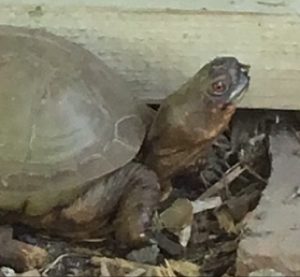How Cruises Affect the Environment
UPDATE: This article was written during the outbreak of Coronavirus and the ensuing pandemic. And while the cruise industry, and travel industry in general, will suffer heavily from the impacts of Coronavirus, the information below is nevertheless prevalent in the cruise industry. At the current time, even in the midst of a pandemic, dozens of cruise ships are still at sea, demonstrating that with time, the cruise industry will probably recover and the status quo will continue in the upcoming years.
Millions of people take cruises each year. It has become one of the biggest vacation industries in the world. And as cruise ships sail around the globe, it is important to keep in mind what toll is taken on our planet when those ships set sail and harbor.
According to the 2019 Cruise Ship Report Card, all three of the major cruise corporations – Royal Caribbean International, Carnival Corporation, and Norwegian Cruise Line Holdings – are failing in at least one category. While all are doing poorly in one aspect or another, it is Carnival Corporation that is wreaking the most havoc on our waters, and, subsequently, the marine life. (A complete breakdown of each company’s report card can be found at www.foe.org/cruise-report-card.)
We know that these companies are failing, but at what exactly are they failing? Firstly, the problems cruises pose to our environment are some of the more “straightforward” ones: sewage pollution as well as air pollution. In the former, we see cruise ships routinely dump their waste, at times untreated, into the body of water they are on. This waste then remains in the water, killing sea life and endangering coral reefs. As Lora O’Brien notes in her article, “Are Cruises Eco Friendly?”, cruise ships are allowed to dump their unfiltered sewage straight into the ocean if they are at least “three nautical miles of any shore” (eluxemagazine.com/travel/are-cruises-eco-friendly).
Some might be thinking, “Ok, but isn’t the ocean enormous?” Yes, but the waste adds up. Friends of the Earth points out that “the U.S. EPA estimates that a 3,000-person cruise ship generates 150,000 gallons of sewage per week – enough to fill 10 backyard swimming pools. This adds up to more than 1 billion gallons of sewage a year for the industry.” This number is staggering, and it only includes one of the many effects cruises have on the environment.
Air pollution is another significant problem cruises create for our planet. Cruise ships emit several dangerous pollutants into the air, whether at sea or docked near land, filling the breathable air for all life with toxins that are deleterious to our health. In addition, the air pollutants also pose a threat to the environment as is well known when emissions such as carbon dioxide and nitrogen oxides are pumped into our atmosphere.
Though many people assume the two problems addressed thus far – namely, sewage pollution and air pollution – to be the most prevalent threats when it comes to cruise ships, they are only two on the list of problems. One evident problem is the destruction of land, that’s right, land! by cruise ships. In some places it has become so detrimental that cities like Venice were deciding on whether or not to ban cruise ships from their ports. This is due to “waves caused by the cruise ships have eroded the underwater supports of historic buildings and polluted the waters,” according to an article in The Guardian from 2019.
And right next to the land, out not very far on the waters, is further damage. As cities with ports for cruises prepare the waters for the ships marine life is altered just to accommodate the tourism. As O’Brien notes, this “has a huge impact on the already fragile marine ecosystems, with mangrove forests being removed to make way for those tourist beaches, and docking structures being built directly on top of already fragile coral reefs”. So before a cruise ship has even docked at one of these ports, the marine life is already decimated.
Another problem that is caused by cruise ships, but less visible to humans than those above, is noise pollution. But just because we may not “see” it, does not mean it is not there. Sound travels much faster in water than it does in air, so a cruise ship travelling in the middle of the ocean is creating so many sound waves that are foreign to marine life, effectually putting them in danger. Marine life relies heavily on noises as a basic way for survival. But even more damaging than disrupting survival mechanisms, is the fact that underwater noises from ships can directly cause harm to marine life.
All of these examples are just some of the many that cruise ships cause to our planet, by way of endangering marine life, polluting the atmosphere, damaging land, and creating an overall unhealthy environment for all of us. We should all be able to vacation without having to worry about the effects our vacations have upon us. With all of the problems that cruises create, are they really worth it compared to other ways of vacationing?























